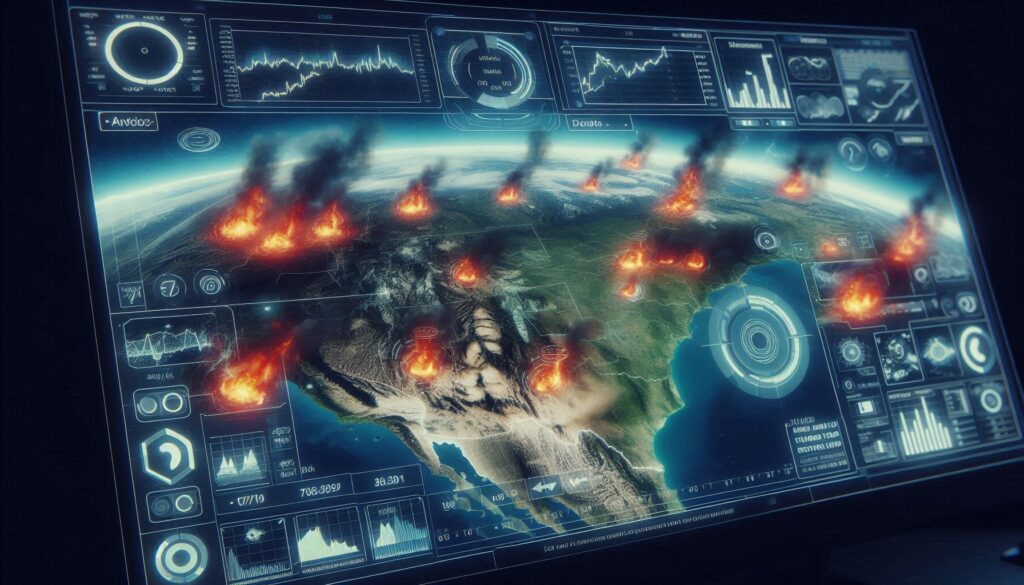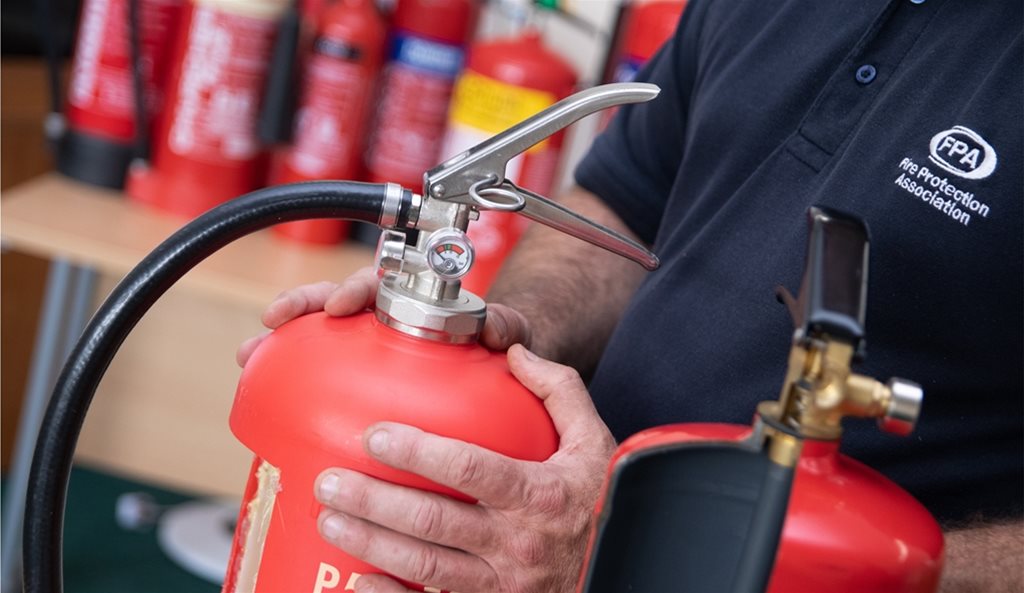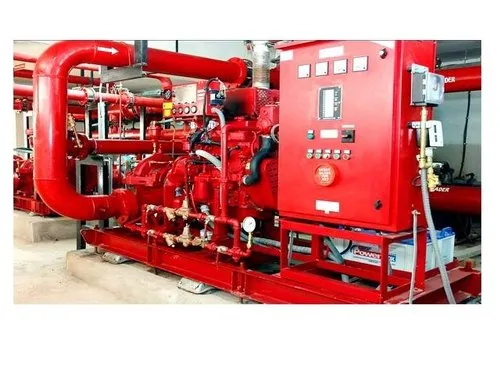Understanding how computational models can forecast wildfire behavior, aiding in proactive land management and firefighter safety
Wildfires are among the most destructive natural disasters on the planet, posing significant threats to ecosystems, human lives, infrastructure, and economies. Over the last few decades, the increasing severity and frequency of extreme wildland fire events have underscored the urgent need for proactive measures to mitigate their impact. Traditional approaches to wildfire management, such as reactive suppression and containment, are no longer sufficient to address the scale and complexity of modern wildfires.
Enter predictive modeling: an advanced computational approach that uses data, algorithms, and simulations to forecast wildfire behavior. Predictive modeling represents a revolutionary shift in how we approach wildland fire management, allowing for proactive strategies that improve firefighter safety, protect critical resources, and enhance ecosystem resilience. In this article, we’ll explore the science behind predictive modeling, how it works, its applications in wildfire management, and the challenges and opportunities it presents.
The Increasing Threat of Extreme Wildland Fires
Wildland fires have grown more extreme in recent years due to a combination of climate change, land use patterns, and environmental degradation. Rising global temperatures, prolonged droughts, and erratic weather conditions have created a “perfect storm” for severe wildfires. In the United States alone, wildfires burned over 7 million acres annually on average between 2010 and 2020, with some fire seasons far exceeding that figure.
These extreme events are not only larger in size but also more unpredictable in behavior, spreading rapidly and intensifying under erratic wind conditions. This unpredictability poses significant challenges to firefighting efforts, often putting firefighters and nearby communities in harm’s way.
Given these risks, understanding and predicting wildfire behavior has become a critical focus for researchers, land managers, and policymakers. Predictive modeling offers a powerful tool to anticipate wildfire dynamics and enable data-driven decision-making.
What Is Predictive Modeling?
Predictive modeling involves the use of mathematical and computational models to simulate and forecast complex phenomena—in this case, wildfire behavior. These models integrate a wide range of variables to predict how a wildfire will evolve over time, including:
- Fuel Characteristics: The type, density, and moisture content of vegetation in the area.
- Weather Conditions: Temperature, humidity, wind speed, and direction, all of which significantly influence fire behavior.
- Topography: The slope and elevation of the terrain affect how fires spread, with steeper slopes often resulting in faster-moving flames.
- Ignition Sources: Human activities (e.g., campfires, power lines) and natural factors (e.g., lightning strikes) that can spark fires.
By analyzing these factors, predictive models can estimate the speed, direction, and intensity of a wildfire, as well as the likelihood of spot fires (small fires ignited by embers carried by the wind).
Types of Predictive Models for Wildfires
There are several types of predictive models used in wildland fire management, ranging from relatively simple tools to highly complex systems that rely on cutting-edge technology.
1. Empirical Models
Empirical models are based on historical data and observations of past fires. These models use statistical relationships to predict fire behavior under similar conditions. While they are relatively simple and easy to use, they often lack the precision and flexibility needed for real-time decision-making in extreme wildfire events.
2. Deterministic Models
Deterministic models rely on mathematical equations to simulate fire behavior based on physical principles. For example, they calculate how heat is transferred between burning fuel and unburned vegetation, or how wind and slope influence flame spread. Deterministic models are more accurate than empirical models but require detailed input data and significant computational resources.
3. Probabilistic Models
Probabilistic models take uncertainty into account, generating multiple scenarios to estimate the likelihood of different outcomes. These models are particularly useful for assessing risk and planning for worst-case scenarios.
4. Machine Learning Models
Recent advancements in artificial intelligence and machine learning have opened new possibilities for wildfire modeling. Machine learning algorithms analyze vast amounts of data, including satellite imagery, weather patterns, and historical fire records, to identify patterns and make predictions. These models improve over time as they process more data, making them highly adaptable to changing conditions.
Components of Successful Predictive Models
For a predictive model to be effective in forecasting extreme wildland fire events, it must incorporate several key components:
1. High-Quality Data
Accurate and up-to-date data is the foundation of any predictive model. This includes data on fuel types, weather conditions, and topography, as well as real-time information on active fires. Advances in remote sensing technology, such as satellite imagery and LiDAR, have greatly improved the availability and quality of wildfire data.
2. Real-Time Updates
Wildfires are dynamic events that can change rapidly due to shifting winds, weather patterns, or fuel conditions. Predictive models must be able to process real-time data and update their forecasts accordingly.
3. Integration of Multiple Factors
Wildfire behavior is influenced by a complex interplay of factors, from fuel moisture to atmospheric conditions. The most effective models integrate data from multiple sources to provide a comprehensive picture of fire dynamics.
4. User-Friendly Interfaces
Predictive models need to be accessible to a wide range of stakeholders, including land managers, firefighters, and policymakers. User-friendly interfaces and visualization tools, such as heat maps and 3D simulations, make it easier to interpret and act on model predictions.
Applications of Predictive Modeling in Wildfire Management
Predictive modeling has a wide range of applications in wildfire management, from proactive land planning to real-time firefighting operations.
1. Risk Assessment and Prevention
Predictive models can identify areas at high risk of wildfires based on fuel loads, weather patterns, and historical fire data. This information can guide land managers in implementing preventive measures, such as controlled burns, fuel reduction, and firebreak construction.
2. Evacuation Planning
By forecasting the spread of a wildfire, predictive models can help emergency responders determine which areas need to be evacuated and when. This ensures that residents and firefighters can move to safety before conditions become life-threatening.
3. Resource Allocation
During an active wildfire, predictive models can help incident commanders allocate resources more effectively. For example, the models can identify areas where suppression efforts are likely to be most successful, or where additional resources are needed to protect critical infrastructure.
4. Firefighter Safety
Predictive models can improve firefighter safety by identifying potential hazards, such as areas where fire intensity is expected to increase or where wind conditions could cause rapid changes in fire behavior.
5. Post-Fire Recovery
After a wildfire has been contained, predictive models can assist in assessing the damage and planning for recovery. For example, they can identify areas at risk of soil erosion or invasive species growth, guiding efforts to restore ecosystems and prevent future fires.
Challenges in Predictive Modeling of Wildfires
Despite their potential, predictive models face several challenges that must be addressed to maximize their effectiveness:
1. Data Gaps
In many regions, there are significant gaps in the data needed to build accurate predictive models. For example, remote areas may lack detailed fuel maps or weather stations.
2. Complex Fire Behavior
Extreme wildfires often exhibit complex and unpredictable behavior, such as fire tornadoes or long-distance ember spotting. Capturing these phenomena in a model is a significant challenge.
3. Computational Demands
High-resolution models require significant computational power, which may not be available in all firefighting agencies or remote locations.
4. Uncertainty in Predictions
All predictive models involve some degree of uncertainty, particularly when dealing with rapidly changing conditions. Communicating this uncertainty to decision-makers is critical for effective wildfire management.
The Future of Predictive Modeling in Wildfire Management
The future of predictive modeling lies in continued advancements in technology and data science. Emerging trends include:
- Integration with Drone and Satellite Data: Real-time data from drones and satellites can improve the accuracy and timeliness of model predictions.
- AI-Powered Models: Machine learning algorithms will continue to play a larger role in wildfire modeling, allowing for more accurate and adaptive predictions.
- Cloud-Based Platforms: Cloud computing can provide the computational power needed to run high-resolution models, making them more accessible to firefighting agencies.
- Collaboration and Open Data: Sharing data and models across organizations and borders will enhance our collective ability to predict and manage wildfires.
Conclusion
Predictive modeling represents a powerful tool in the fight against extreme wildland fire events. By forecasting wildfire behavior, these models enable proactive land management, improve firefighter safety, and reduce the devastating impacts of wildfires on communities and ecosystems.
While challenges remain, the continued development of data-driven models, combined with advances in technology and collaboration, will transform how we understand and manage wildfires. As we face an era of increasing wildfire risk, predictive modeling will be a cornerstone of modern wildfire management, helping to protect lives, property, and the environment.





